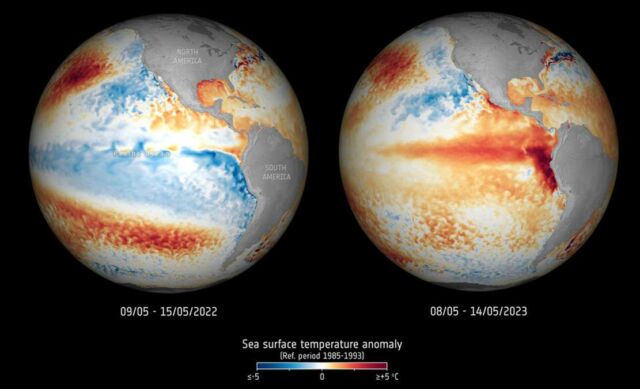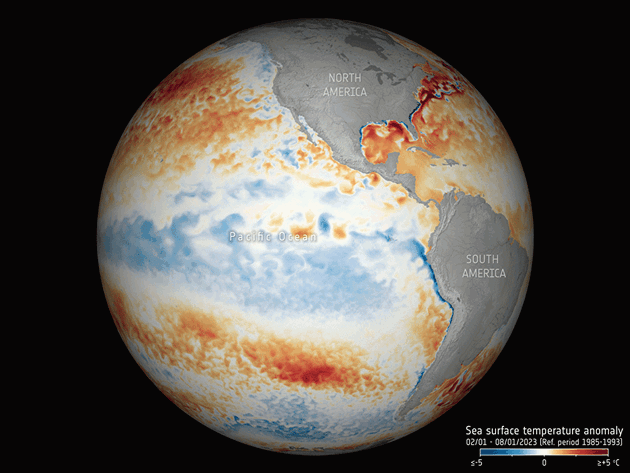Climate change is already fuelling the recent extreme temperatures that many of us have had to deal with, so the worrying question is whether the impending El Niño will make matters even worse.
The coupled ocean-atmosphere system of El Niño and La Niña, together known as the El Niño Southern Oscillation, are drivers of significant variations in global temperature and precipitation, on top of the warming trend caused by climate change.
El Niño occurs every few years when the trade winds weaken allowing warm water in the western Pacific Ocean to shift eastward, bringing with it changes in wind patterns and ocean dynamics. This can have a significant impact on weather around the world, leading to changes in ecosystems and fisheries, droughts, floods, and storms, amongst others.

Sea-surface temperatures May 2022 and May 2023
Climate models suggest that after three years of La Niña, which has a general cooling effect on the planet, in the next few months, we will face a return to the more troublesome El Niño.
ESA’s lead ocean scientist, Craig Donlon, said:
“More than 70% of our planet is covered by ocean. It plays an enormous role in the climate system.
We all know that our climate is warming – but I imagine that most people first think of warmer air temperatures. In fact, our oceans have been soaking up much of this extra heat, keeping the atmosphere relatively cool. This has come at a cost, and we are now seeing the temperature of our oceans at their hottest since records began.”
source ESA



